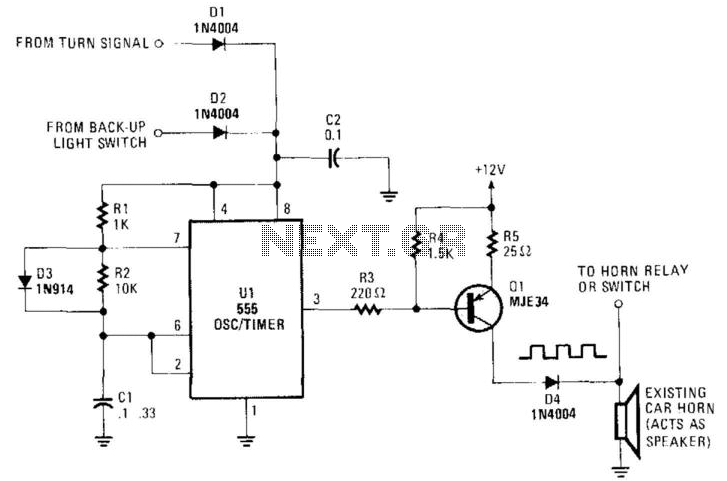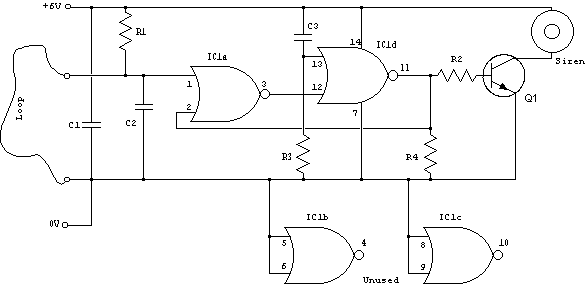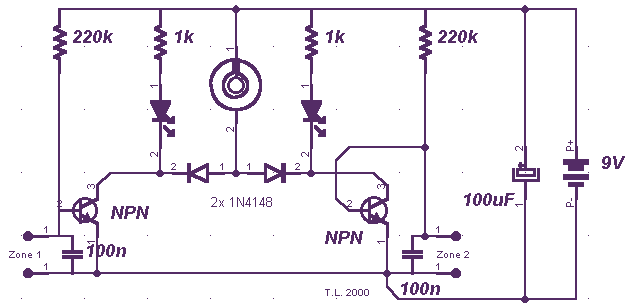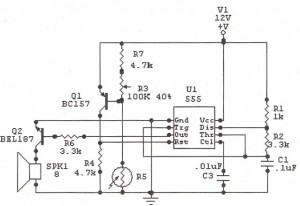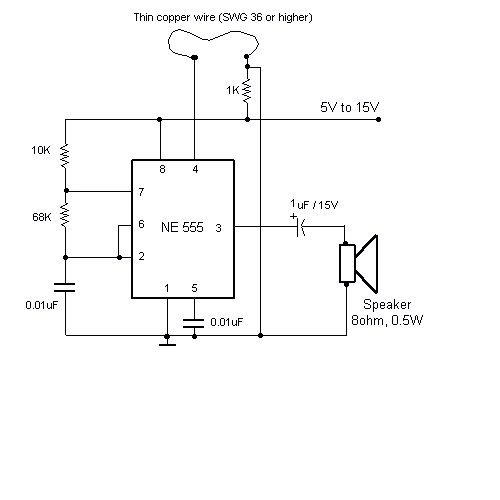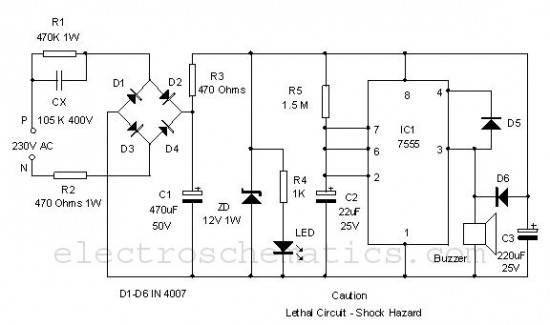
Low-volts alarm
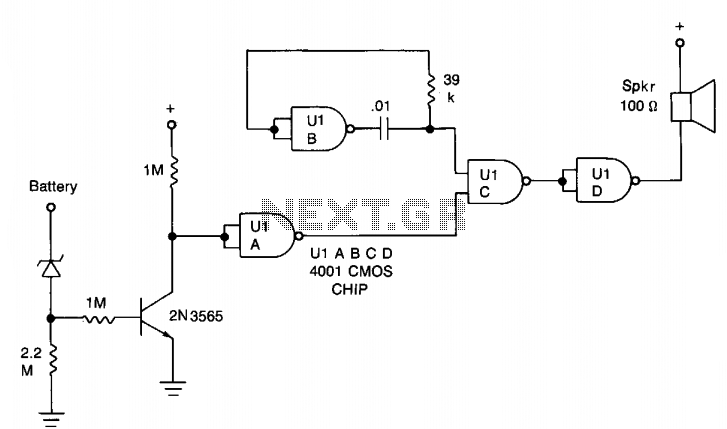
This low-cost DC supply voltage monitor emits a warning when the voltage drops below a specified threshold. It is particularly suitable for monitoring rechargeable batteries as it consumes only a few microamperes in its idle state. The voltage level at which the alarm activates is set by a zener diode. When the voltage decreases below the zener voltage, the alarm is triggered. The tone of the alarm is dictated by the RC time constant formed by a 39 kΩ resistor and a 0.01 μF capacitor.
The circuit operates by utilizing a zener diode to establish a reference voltage level. When the input voltage falls below this reference, the zener diode conducts, signaling the alarm circuit to activate. The alarm is typically implemented using a simple piezoelectric buzzer or a similar sound-emitting device.
The RC time constant, determined by the resistor and capacitor values, influences the frequency and duration of the alarm sound. In this circuit, the 39 kΩ resistor in combination with the 0.01 μF capacitor creates a time constant of approximately 0.39 milliseconds, which affects the oscillation frequency of the alarm tone produced. The resulting sound can be adjusted by changing these component values, allowing for customization based on user preference.
This voltage monitor is particularly advantageous in battery management systems where low power consumption is essential. The circuit's design ensures minimal energy draw during its idle state, making it ideal for applications where battery life is a critical factor. The simplicity of the design allows for easy integration into existing systems, providing a reliable solution for voltage monitoring in various electronic applications.This inexpensive dc supply-voltage monitor sounds a warning when the voltage falls below a preset value. It is ideal for monitoring rechargeable batteries since it draws only a few microamperes when not sounding.
The voltage at which the alarm sounds is determined by the zener diode. When the voltage falls below the zener voltage, the alarm sounds. The alarm tone is determined by the RC time constant of the 39 k resistor and 0.01 mf capacitor. 🔗 External reference
The circuit operates by utilizing a zener diode to establish a reference voltage level. When the input voltage falls below this reference, the zener diode conducts, signaling the alarm circuit to activate. The alarm is typically implemented using a simple piezoelectric buzzer or a similar sound-emitting device.
The RC time constant, determined by the resistor and capacitor values, influences the frequency and duration of the alarm sound. In this circuit, the 39 kΩ resistor in combination with the 0.01 μF capacitor creates a time constant of approximately 0.39 milliseconds, which affects the oscillation frequency of the alarm tone produced. The resulting sound can be adjusted by changing these component values, allowing for customization based on user preference.
This voltage monitor is particularly advantageous in battery management systems where low power consumption is essential. The circuit's design ensures minimal energy draw during its idle state, making it ideal for applications where battery life is a critical factor. The simplicity of the design allows for easy integration into existing systems, providing a reliable solution for voltage monitoring in various electronic applications.This inexpensive dc supply-voltage monitor sounds a warning when the voltage falls below a preset value. It is ideal for monitoring rechargeable batteries since it draws only a few microamperes when not sounding.
The voltage at which the alarm sounds is determined by the zener diode. When the voltage falls below the zener voltage, the alarm sounds. The alarm tone is determined by the RC time constant of the 39 k resistor and 0.01 mf capacitor. 🔗 External reference
